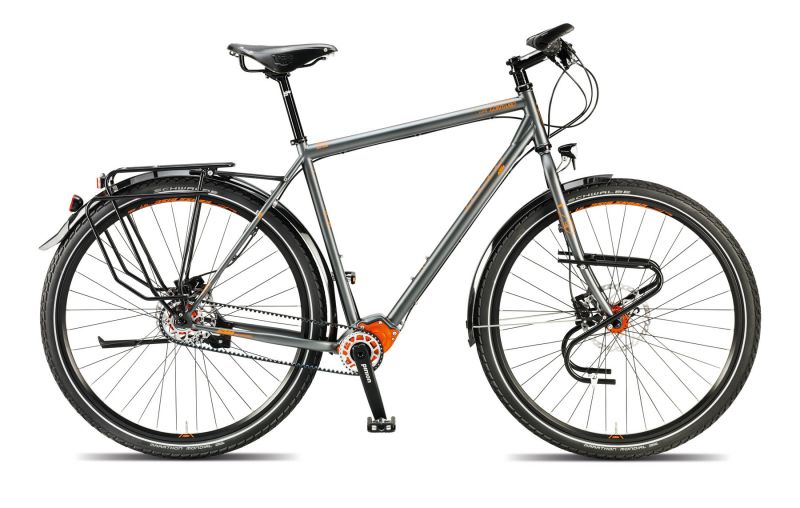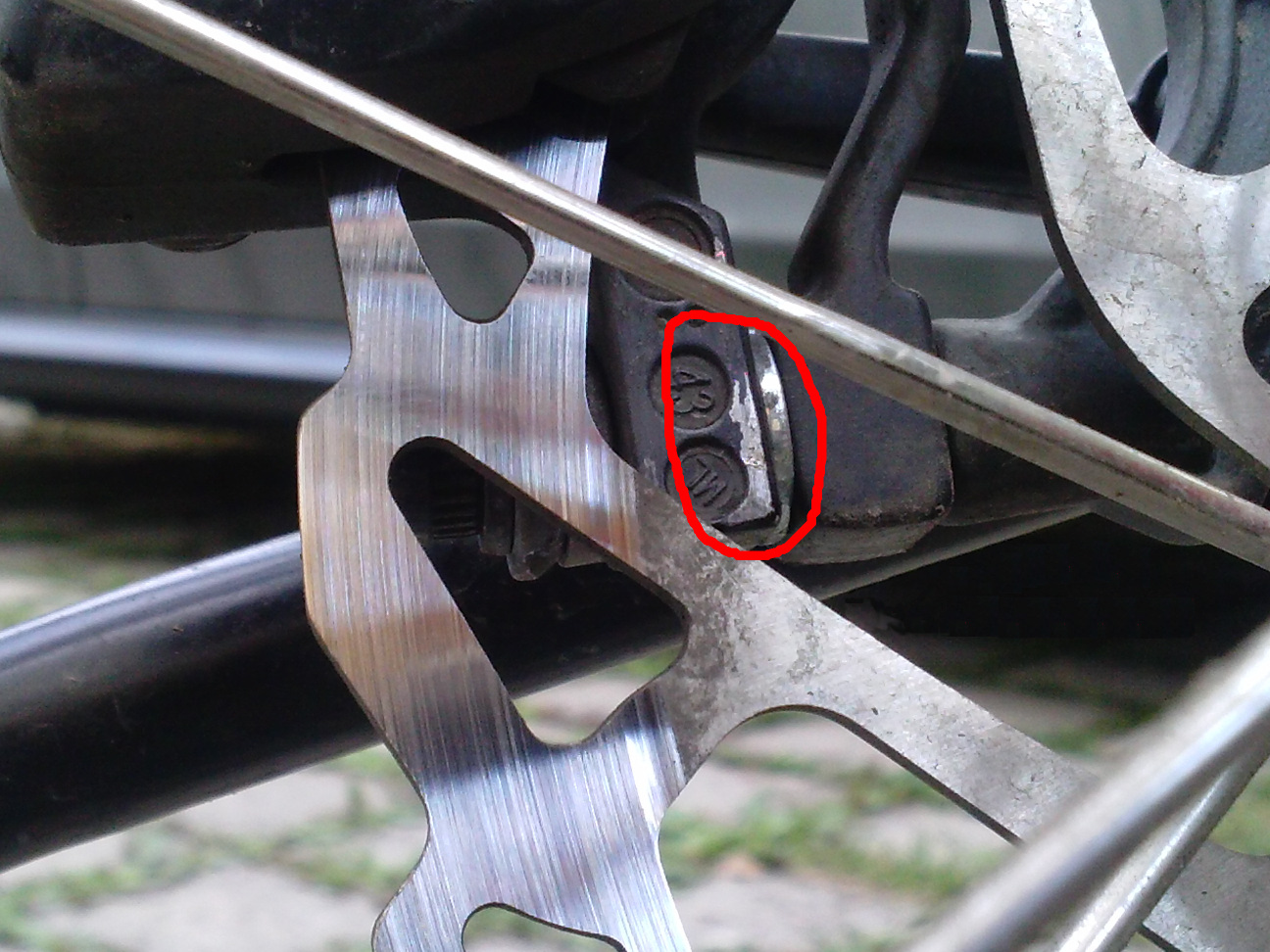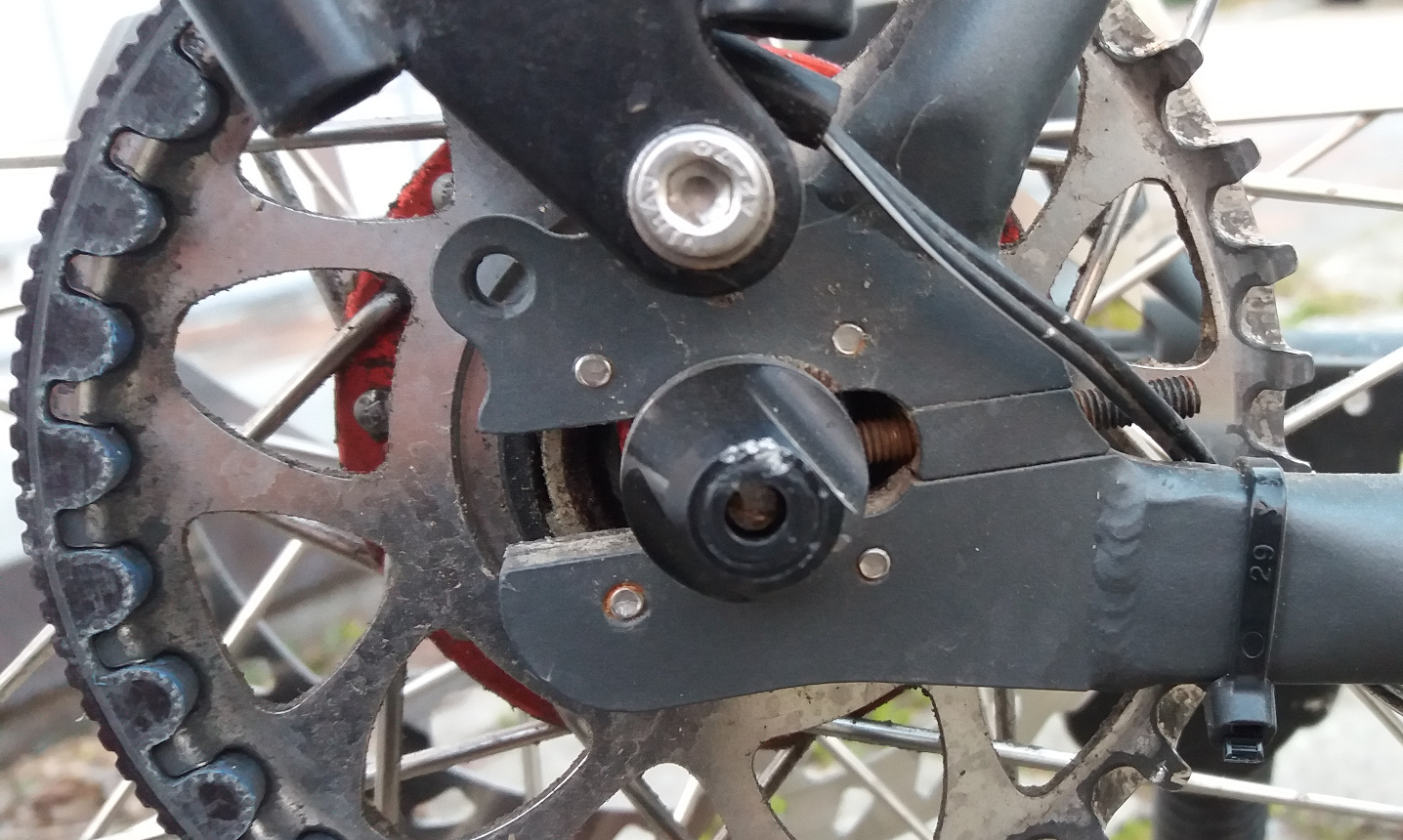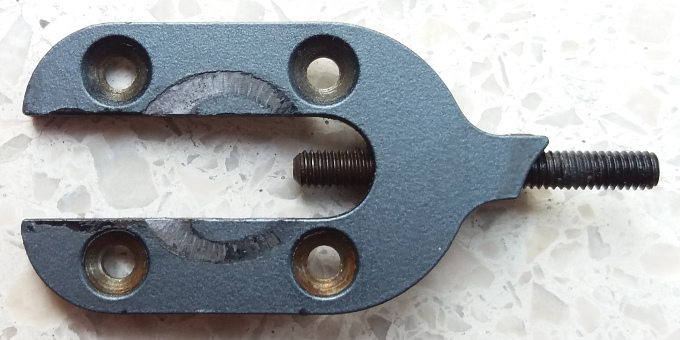Introduction
When using my old bicycle on cycle tours then, within a day or two, dirt on the chain would noticeably affect the effort I made when pedaling. Within two weeks, the gear changer and cassette would be out of alignment and affect how I used the gear levers to change gear. Finally, I decided I had had enough of derailleurs.
At the time, Rohloff offered the best alternative but the breadth of gear ratios was below what derailleurs could do and as my knees, like the rest of me, are middle-aged, I wanted better ratios.
However, recently the Pinion P1.18s came to market and the breadth of gear ratios exceeds what derailleurs can do:
I had heard that about 5% more effort is lost with gearboxes than with derailleurs in the transmission of the effort your legs are making to propelling you along the road. But my gut feeling is that a similar amount more is lost with a dirty derailleur than with a clean one. So I bought a bicycle with these gears, specifically: KTM Life Lontano P1.18 2015.
What follows is my review of this bicycle.
Photos
Specs
| frame geometry | trekking (crossbar angle is between that of a tourer and that of an MTB) |
| frame & fork material | CroMoly |
| front hub with dynamo | SP Dynamo PD-8 |
| rear hub | KTM |
| tyres | Schwalbe Marathon Mondial 50-622 (but I replaced these with Schwalbe Marathon Supreme 37-622) |
| brake calipers | Shimano BR-T615 |
| brake rotors | ? (but I replaced these with Shimano SM-RT86-M; see below for important info!) |
| brake levers | Shimano BL-T615 |
| rims | Ambrosio AK-26 DISK (?) 622x21 |
| mudguards | SKS Bluemels Primus |
| gears | Pinion P1.18 |
| gear shifter | Pinion rotary shifter P5500 |
| chainset | Pinion Gates Carbon Drive sprocket |
| handlebars | KTM |
| stem | KTM |
| grips | Ergon GP3 |
| headset | Ritchey Comp |
| pedals | ? (but I replaced these with XLC PD-M04) |
| saddle | Brooks B17 |
| seatpost | KTM |
| front light | B&M Lumotec EYC (with standlight) |
| rear light | B&M Toplight Mini Plus (with standlight) |
| rear carrier | Tubus Logo Classic |
| low rider | Tubus Duo |
| stand | unbranded |
| weight | 17.3Kg |
The good
- MAJOR: There is no changer/cassette misalignment!
- MAJOR: The gears and belt stay clean.
- There’s a reduced occurrence of the “I need a four-and-a-halfth gear” problem because gear stepping is small (11.5%); typically a 27 gear bicycle really only has 13 gears once overlaps are excluded; this bicycle has 18 gears without overlap!
- It has a steel frame (though it’s a matter of taste whether you think this is good or bad)
- It has comformable handlebar grips.
The bad
- MAJOR: Removing the rear wheel in order to repair a puncture is non-trivial because the dropouts are rear-facing.
- MAJOR: Replacing the belt is non-trivial. Yes, belts are longer-lasting than chains, but still need to be replaced eventually. Frames and chains/belts are interlinked so one of them needs to be “broken” to be removed. When using a chain then it is the chain that is “broken” and the new chain is “passed through and closed around” the frame; when using a belt, because the belt is “unbreakable”, it has to be the frame that is “broken” and then “passed through and closed around” the new belt. A small piece of metal (pictured above) is removed from the frame in order to “break” it; this piece of metal is held in place by four of the tiniest and weakest screws I’ve ever seen! There is a real danger of breaking their threads (I broke one, carefully bored one out of its hole in the frame, then broken another one and then got rid of the whole bicycle!)
- MAJOR: When turning the handlbars at speed, the front disk brake’s rotor’s “spokes” clip the brake caliper resulting in a lot of noise. It took a long time to diagnose this problem. It was caused by the rotor being flexible enough to partially allow the disk to continue its forward motion when turning the handlebars. There is a picture showing the damage caused above. The solution was to replace the front disk (and, for symmetry, also the back disk) with a much stiffer one.
- A Brooks saddle is a beautiful thing but I find it much too hard for long tours and it’s expensive.
- When reinserting the rear wheel, e.g. after repairing a puncture, it is prone to misalignment because the axle is positioned some distance from the end of the rear-facing dropouts. This misalignment caused the rear disk brake’s rotor’s “spokes” to clip the stand fixing.
- The bolt holding the gear changer in position is too soft: I wanted to change its angle to suit my height better and this resulted in the bolt head losing its moulding, thereby making it impossible to make further adjustments.
- According to the manufacturer, a belt should last about twice as long as a chain, but a belt costs about four times as much as a chain.
- Acquiring a replacement belt while on tour can be difficult.
- Spare belts may not be twisted to pack small.
- It’s an expensive bicycle; expect to pay about 3400 EUR; similar models with Shimano derailleur gears are about 1300 EUR cheaper.
- The stand is insufficiently robust for a loaded bicycle.
- The pedals lack any foot-positioning-guide (e.g. clips, or toe-clips) and are therefore inadequate for touring.
- Bad service from the internet shop (who will remain nameless) from whom I bought the bicycle; the lesson: don’t buy a bicycle on the internet, buy it at a local shop.
Suggestions to the reader
- Ask yourself if you really want a bicycle for touring; as a city bicycle I can recommend this bicycle, but as a touring bicycle, I cannot.
- Ask yourself what the desirable characteristics of a touring bicycle (e.g. use of widely available components).
- Read Wikipedia’s description of touring bicycle specifications.
- Play with Koga’s bicycle designer even if you don’t want a Koga bicycle; it forces you to consider which components are most suitable for a touring bicycle.
Suggestions to KTM
- Change the model of both brake rotors for something stiffer; the front brake rotor was a major problem!
- Change the saddle for something that one can comfortably sit on for 6 hours per day (e.g. Selle Royal Optica)
- Use a harder bolt to hold the gear changer in position; the current one is too soft and its head lost its moulding after only one untightening for repositioning, leaving it loose (maybe something for Pinion to fix?)
- Change the pedals for something more suitable for touring (e.g. Shimano M324 SPD)
- Change the stand for something more robust (e.g. Pletscher Comp 40)
(July 2018) Interestingly, it looks like KTM have dropped this bicycle from their catalogue.






